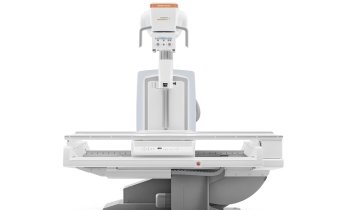Copper: The relentless killer on our side
Report: Karoline Laarmann
Professor Bill Keevil, Director of the Environmental Healthcare Unit at University of Southampton’s School of Biological Sciences, was among the first microbiological researchers to experiment on copper’s efficiency against pathogenic and nonpathogenic strains of E. coli bacteria and demonstrate the inherent anti-microbial property of the metal.

Since 2009, the copper industry set up worldwide field trials in busy hospitals in the United Kingdom, Germany, Japan, the USA, Chile and South Africa, to transfer the research findings of Professor Bill Keevil and other experts into the real world of clinical practice. Participating hospital wards were fitted with copper alloy surfaces and samples were taken daily from those surfaces and compared with control surfaces. The results showed that the copper surfaces led to a 90% reduction of microbial numbers. However, does copper also reduce infection rates among patients? A current US study, introduced in the beginning of 2011, is trying to ascertain just that and the initial data reveals the effects of copper are very promising. Notably, this mineral is not new in the sphere of health. ‘Since ancient times, mankind has been aware of the beneficial properties of copper to reduce microbial infections – even though people did not understand the germ theory back then, they recognised the correlation between copper and disease protection,’ explained Bill Keevil.
‘5,000 years ago, the Egyptians, for example, used copper to transport water and to heal wounds. Later on, in the 1850s, it was noticed that, during the Parisian Cholera outbreaks, the copper workers were not affected. But while in 20th Century copper alloys were used extensively for door handles, push plates, taps or work surfaces, the development of contemporary materials, such as stainless steel and plastics, began to eliminate copper from everyday life more and more.’ Explaining how he became involved in copper research, Prof. Keevil said: ‘Back in the 1980s, we started to work on copper at the Public Health Laboratory Service’s Centre at Porton Down and subsequently at Southampton University, first in water systems and later on in contact systems. The reason for that were the outbreaks of Legionella bacteria, which caused Legionnaires’ disease in people. As a waterborne pathogen, Legionella is disseminated through drinking water and cooling systems. It showed that if people used copper pipes, the legionella numbers were much lower.
‘Then, we started to examine Escherichia coli O157, often nicknamed the ‘burger bug’ and the ‘pate bug’, respectively, for the food industry and again it showed that the pathogens died very rapidly on copper surfaces. At the same time, we saw ourselves confronted with the drug-resistant ‘super bugs’ for the first time and wondered if copper surfaces would kill these, too. ‘In the first experiments we applied wet inocula (microorganisms used in an inoculation) on surfaces. These showed that the pathogens all died within two hours of contact -- when 10 million cells were on the surface. If the number of cells was reduced to 1,000 cells – in ward environments there can be low concentrations of only 1,000 super bug cells on a surface like a door handle – they even died in 15 minutes. ‘We then developed a dry inoculum test to mimic hand contact. We put a very low volume of organisms on the surface, the surface dries almost immediately and the equivalent of dry contacts showed that even 10 million cells died in under 10 minutes. When we reduced the concentration of cells, they died even faster. So, what we now know is copper alloy begins to kill pathogens as soon as they touch the surface. When the surface is wet it takes between 45 minutes and two hours to kill 10 million germs and if it is a dry surface, it takes 10 minutes or less.’
How does it work? ‘Copper ions, Cu(I) and Cu(II), penetrate into the cell, where they inhibit its respiration. The copper ions also attack the DNA of the cell and destroy it, so gene transfer is no longer possible. In addition, they attack the cell membrane of Gram-negative bacteria such as E. coli, so that it becomes permeable and the membrane potential collapses. What we also found is that there is a chemical reaction called the Fenton reaction, whereby Cu(I) and Cu(II) recycling leads to the production of potent reactive oxygen species such as superoxide and hydroxyl radial: these work even faster than the copper ions themselves. When we think of shiga toxin producing E. coli (STEC), such as 0157 or the new 0104 strain involved in the German outbreak, they contain the very toxic stx genes that can be transferred as part of a lambda prophage virus which infects bacteria. We know that copper kills viruses and destroys DNA, including plasmids, so this should stop the transfer of DNA, which would include those toxic genes and also the transfer of antibody resistance from one species to another.’
So, could copper replace good hygiene practice? ‘No, even though copper is a smart material that works 24/7, you still need a normal cleaning practice and good staff hygiene. It just gives you an extra level of protection. It is also budgetfriendly; it costs similar prices to stainless steel. So if people build a new hospital, or plan to renovate their ward completely, they should definitely consider going for copper.’ Professor Keevil will present his findings at the forthcoming WHO International Conference on Prevention and Infection Control, in Geneva on 30 June.
20.06.2011











